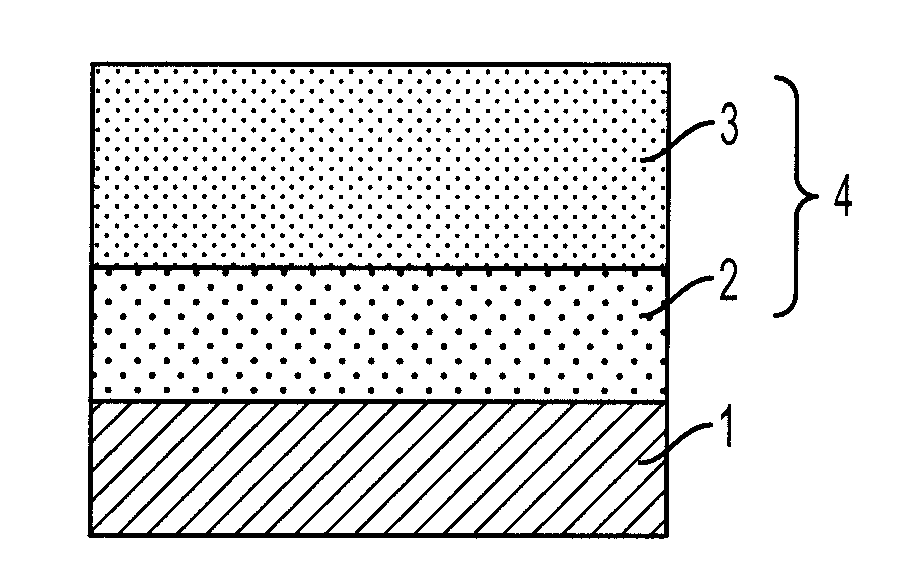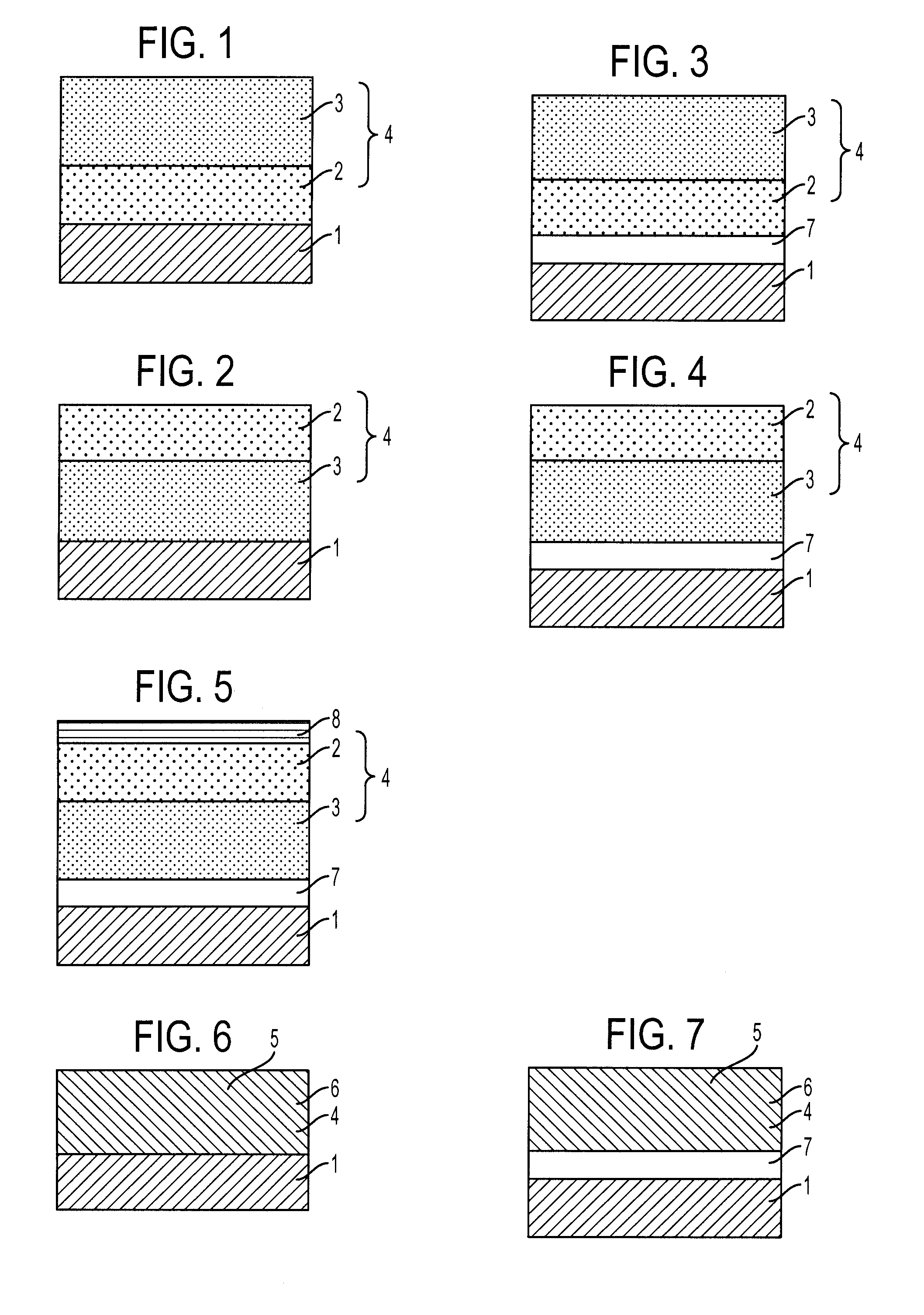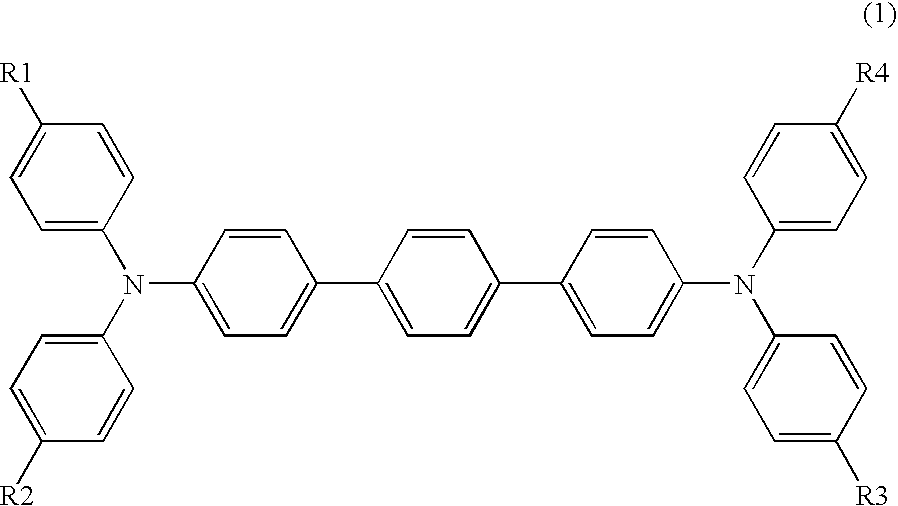Arylamine compound and electrophotographic photoreceptor
- Summary
- Abstract
- Description
- Claims
- Application Information
AI Technical Summary
Benefits of technology
Problems solved by technology
Method used
Image
Examples
synthesis example 1
Synthesis of Compound No. 1-2
[0094]Toluene (70 ml) and 78.7 g (0.53 mol) of 4-n-butylaniline were charged, 55.5 g (0.54 mol) of acetic anhydride was added dropwise thereto under cooling, and thereafter, reaction was allowed to proceed for 1 hour at an inner temperature of 90 to 95° C. The reaction solution was cooled, 160 ml of water was added thereto, and the resulting solution was stirred, left standing and then subjected to liquid separation into an organic layer and an aqueous layer. The organic layer was removed by distillation under reduced pressure, the residue was crystallized by adding 200 ml of ethanol and 200 ml of water thereto and through separation by filtration, 91.1 g (yield: 90.3%) of N-acetyl-4-n-butylaniline was obtained as a white crystal.
[0095]Subsequently, 83.7 g (0.44 mol) of N-acetyl-4-n-butylaniline, 121.4 g (0.71 mol) of 4-bromotoluene, 1.09 g (0.004 mol) of copper sulfate pentahydrate and 35.3 g (0.33 mol) of sodium carbonate were charged, the temperature ...
example 1
Measurement of Mobility
[0097]Amorphous selenium was vacuum-deposited on an aluminum substrate to a thickness of 0.5 μm, a solution obtained by dissolving a mixture of Compound (1-2) and Polycarbonate A in dichloromethane was coated thereon, and the coating was dried under pressure at 40° C. for 2 hours to form a photosensitive layer of 10 μm in thickness. A gold electrode was vapor-deposited on the surface of the photosensitive layer to a thickness of 150 Å, and the hole mobility μ was measured according to the Time of Flight method by irradiating 5-ns pulsed light from a laser of 510 nm. The measurement conditions were selected according to the method described in publications (Philosophical Magazine B, Vol. 58, No. 5, page 539 (1988); J. Phys. Chem., Vol. 88, No. 20, page 4707 (1984)).
[0098]Here, it is known that the dependency of the hole mobility μ on the electric field intensity can be quantitatively adjusted according to the following formula. In mathematical formula 1, μ0 rep...
examples 2 to 21
Measurement of Mobility
[0099]Using other compounds of the present invention, photosensitive layers were produced by the same operation as in Example 1, and mobility was measured under the same measurement conditions.
[0100]The hole mobility μ under the condition of E=5×104 V / cm determined from the measurement conditions above, the value, and the zero field mobility β0 calculated according to mathematical formula 1 in each of Examples 1 to 21 are shown in Table 2.
TABLE 2μ (cm2V−1S−1) atCompoundμ0βE = 5 × 104ExampleNo.(cm2V−1S−1)(cm / V)0.5(V / cm)11-2 13.5 × 10−6 1.119 × 10−317.3 × 10−621-1 12.1 × 10−6 1.152 × 10−315.7 × 10−631-4 11.3 × 10−6 1.176 × 10−314.7 × 10−641-6 11.9 × 10−6 1.166 × 10−315.4 × 10−651-8 12.5 × 10−6 1.198 × 10−316.3 × 10−661-138.5 × 10−61.144 × 10−311.0 × 10−671-148.1 × 10−61.192 × 10−310.6 × 10−681-2010.5 × 10−6 1.266 × 10−313.9 × 10−691-248.8 × 10−61.305 × 10−311.8 × 10−6101-2511.4 × 10−6 1.121 × 10−314.6 × 10−6111-267.6 × 10−61.137 × 10−3 9.8 × 10−6121-308.5 × 10−6...
PUM
| Property | Measurement | Unit |
|---|---|---|
| Thickness | aaaaa | aaaaa |
| Thickness | aaaaa | aaaaa |
| Angle | aaaaa | aaaaa |
Abstract
Description
Claims
Application Information
 Login to View More
Login to View More - R&D
- Intellectual Property
- Life Sciences
- Materials
- Tech Scout
- Unparalleled Data Quality
- Higher Quality Content
- 60% Fewer Hallucinations
Browse by: Latest US Patents, China's latest patents, Technical Efficacy Thesaurus, Application Domain, Technology Topic, Popular Technical Reports.
© 2025 PatSnap. All rights reserved.Legal|Privacy policy|Modern Slavery Act Transparency Statement|Sitemap|About US| Contact US: help@patsnap.com



